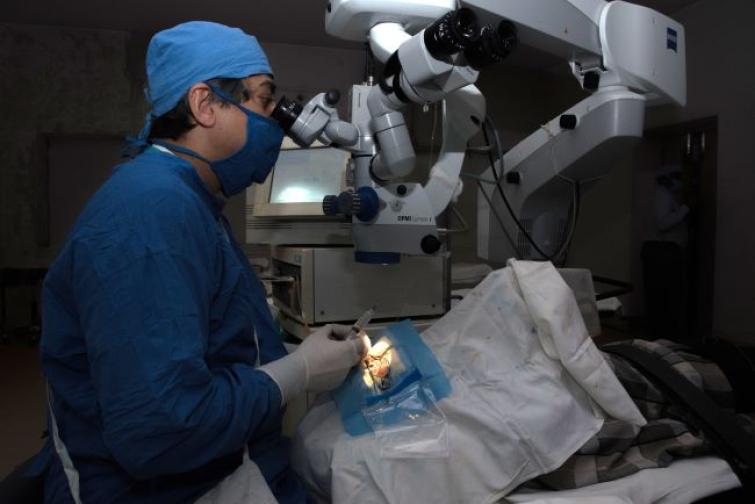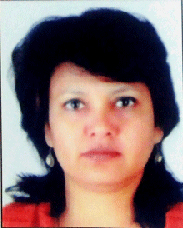 Cataract
Cataract is the third leading cause of blindness in children. Thousands of children are operated all over the world for cataract.
Dr Sanjiv Desai of Jodhpur, is the first ophthalmologist to perform a photochromic lens implantation in both eyes of a two & a half year old child with congenital cataract. The child can now see the world. Dr Desai’s hospital provides affordable care to all in the Thar Desert region of Rajasthan. He is actively involved in community ophthalmology for the last 34 years and has been organizing over 100 free eye camps annually.
This is the first such case of a photochromic lens implanted in the paediatric age group in the world. His second such case in a young girl with cataract in RE.
I talked to him about the Photochromic Lens Implant and why it is best for children.
1.
What prompted you to do this surgery?His parents had brought the child for poor vision and a white reflex in his eyes. On examination I found congenital cataract in both eyes and advised surgery. Childood cataract is a leading cause of permanent irreversible blindness in India. Untreated cataracts in children lead to irreversible blindness because eventually the vision goes to sleep and this produces tremendous social, economic and emotional burden to the child, family, and society. Therefore I decided to operate this child.
2.
Is it the first time this has been done in India?This special photochromic lens has been implanted in a child for the first time in the world.
3. What is so unique that you have done?Pediatric cataract surgery is a specialized surgery and not all eye surgeons do it. Most don’t have the experience or equipment to deal with childhood cataracts. Pediatric surgery must also be done in general anesthesia, a facility which most eye hospitals lack. The technique of pediatric surgery is also vastly different from a routine adult cataract surgery. The most unique thing about this case has been the type of artificial intraocular lens that has been implanted.
4. How will you explain this to a layman? So, sunlight is composed of different colors, each with a distinctive wavelength. A harmful component of sunlight is its blue component. Blue wavelength light is also emitted by computer, tablet and smart phone screens. Blue light consists of very high energy photons which damage the retina, which is the light sensitive retina within the eye. Constant onslaught of blue light over a period of time can lead to a degeneration of the retina. Its believed that because of the way a child’s eye is built more blue light enters it than in adults which could have deleterious effects on the retina and may eventually produce blindness.
The human lens can absorb a lot of UV and Blue light and let only a small amount of it to fall on the retina, thus protecting it. As the human lens ages it also acquires a brown yellow tint which absorbs more blue light then before and has a more protective effect.
But once a cataract is surgically removed and an artificial lens is implanted there is unchecked ingress of large amounts of blue light in the absence of a natural filtering crystalline human lens. The artificial plastic lens now permits blue light to pass through unchecked. To overcome this problem yellow tinted lenses were developed as guardians of the retina for cataract surgery patients. These artificial lenses are permanently yellow in color and are known as Blue Blocking Intra-ocular lenses [IOL]. The yellow tint of the lens filters out the blue light and prevents it from creating photic damage to the retina.
5. Are there any disadvantages of this lens?Since Blue blocker IOL’s remain yellow in color 24x7, these lenses have certain disadvantages like loss of contrast [a person finds it difficult to distinguish an object from its background, especially in the dark / evenings. Contrast is very important for navigation eg, in distinguishing steps, pavements, items in a cupboard. Loss of contrast make navigating on the streets or at home difficult especially in the dark or under low levels of illumination], difficulty in color discrimination [as one is constantly looking through a yellow filter. So there is defective color vision] and disturbance in the circadian rhythm [blue light is important to regulate the sleep cycle. In its absence a person may develop sleep disturbances, irregular sleep, mood imbalance and depression].
An alternative to blue blocking IOL’s was developed in the form of a photochromic IOL. This is the only photochromic IOL in the world. Primarily developed for individuals with senile cataract it becomes yellow only when exposed to sunlight. Once indoors or in the evening or night time it quickly restores to its pristine original colorless transparency.
6. What is the incidence of cataract in children in India and world? In India one out of every 10,000 children is blind. Amongst the group of blind children cataract accounts for 28 % cases and it is only increasing.
7. What are the causes of cateract in children? Three important causes :
a) Congenital : from intrauterine infection [Rubella, toxoplasma, Herpes], malnutrition, developmental anomaly
b) Hereditary : faulty genes which are passed on from generation to generation.
c) Metabolic disease in infants: galactosemia, Wilson disease, hypocalcemia and juvenile diabetes.
8. How is child cataract different from elderly cataract?Firstly Paediatric cataracts are soft cataracts, they are easy to aspirate and remove. Secondly, the covering of the cataract called capsule is elastic and so it is difficult to make an opening in them in contrast to an adult cataract. This makes the pediatric cataract difficult to access at the time of surgery. Thirdly, pediatric cataracts have soluble proteins which incite a lot of inflammation post operatively which need to be controlled.
Fourthly, a few weeks to a few months after surgery the capsule on the back on which the IOL rests, becomes thick and opaque and again produces blindness . Therefore additional surgery must be done to remove the posterior capsule and to remove the vitreous just behind it to prevent re-growth.
Lastly, traumatic cataracts require additional procedures eg, for penetrating wound in the cornea, bound down pupil, ruptured posterior capsule, retained intra-ocular foreign body, bleeding in the eye etc. All these need to be dealt with at the time of the child’s cataract surgery.

